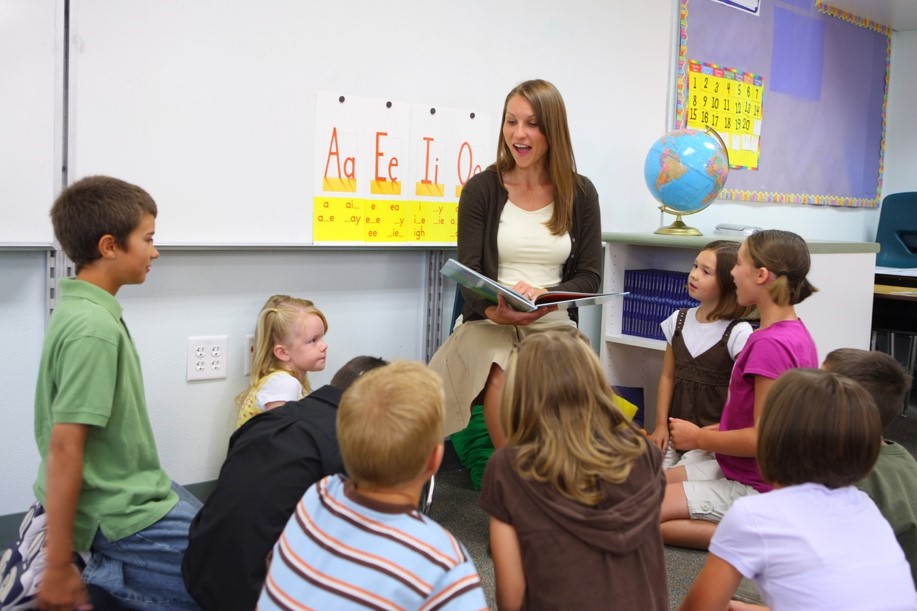A recent report by Hanover Research provides a deep dive into six emerging trends that every school leader and procurement professional needs to understand in order to best serve our students. Based on collaborations with hundreds of public and private school districts, regional education agencies, and professional organization the Hanover Report titled 2025 Trends in K-12 Education provides extensive information about each trend, a timeline, ways to take action, and additional resources and case studies. The following is a brief summary of the trends identified in this important report.
School district leaders are focused on conducting systematic assessments of teaching and learning, finding ways to adapt to fluctuations in student enrollment, accelerating their use of data to make tough decisions with limited budgets, prioritizing students well-being, addressing high staff turnover by improving training, and turning to research-based practices to improve literacy instruction.
1) Push for Systematic Assessment of Teaching and Learning
Due to the uneven academic recovery post-pandemic, there are still significant gaps in student learning. School districts are focusing on high quality curriculum, improved professional development, and robust implementation of tiered supports.
The Hanover report estimates that students need more than four months of additional instruction to catch up to pre-COVID reading and math levels. Schools are also reporting that many of their students are lacking focus and struggle with paying attention in class. In addition, 62% of teachers report that current assessment models are negatively impacting instructional time.
ESSER funds helped improve learning outcomes, but were not enough to address the gap. In particular, students from low-income families, English language learners, and students with disabilities have more significant learning gaps than other students. Many schools are conducting audits using toolkits to systematically review teaching methods.
Evidence-based instructional interventions are key to ensuring the improvement of students’ learning experiences. In particular, reading scores have fallen and roughly 40 states are adopting the Science of Reading approach, an evidence-based method for teaching reading. For example, Massachusetts, a state that had been experimenting with different types of reading curricula has re-focused on using the Science of Reading through a new program called Literacy Launch that includes grants for schools and professional development programs for teachers.

2) Address Fluctuating Enrollments
For many districts, student enrollment is trending downward and that trend is projected to continue through 2030 due primarily to a change in the school age population. There is a projected decline in public school enrollment of over 5% during the next decade. In addition to changing demographics, there is increased interest in private schooling and homeschooling in the US.
Many school districts see this as an opportunity to spend more time connecting and engaging community members and advocating for support and involvement in public education. Many school leaders are creating plans for reaching out to local businesses, diverse community groups, and elected officials to increase support for public schooling.
School choice programs and alternative schooling options have resulted in much greater variability and less predictability in school populations from year to year. Some districts are designing stronger marketing and branding campaigns to make sure local families are aware of the advantages of attending a particular school. Schools are also conducting surveys of the community to better understand how families perceive the school and how they can better address the needs of students. Hanover provides a guide to strategies for increasing district enrollment.
3) Use Data Strategically to Make Tough Resource Decisions
With the disappearance of ESSER funds, school leaders are making careful and strategic data-based decisions to determine how best to spend scarce budget dollars. The combination of declining enrollments and less government dollars to spend under the Trump administration is forcing schools to make difficult choices.
Many school leaders are having to make hard choices about where to cut costs. The Hanover report found that school leaders were investigating school consolidations, layoffs, vendor negotiations, and closing or reducing specific programs. Some leaders are trying to up their game by pursuing other funding streams from business partnerships and grants.
Districts are reviewing all their options and carefully reviewing programs to evaluate return on investment and make cuts where necessary. Some schools are using cycle-based budgeting or flexible budgeting strategies to help better connect funding and district goals. Hanover provides a pre-recorded webinar to help school leaders evaluate programs to inform funding decisions.
4) Prioritize Student Well-Being
Despite funding cuts schools recognize the need to support students’ mental health. Researchers estimate that over 17 million students need mental health support while only about 1 million are being provided with these supports. School bullying has increased in the last few years from 15% to 19%.
School leaders are aware that in order to successfully educate children they must take a wholistic approach. Rates of anxiety, loneliness, and depression have escalated in the past few years, likely due to the pandemic and constant technology use. Schools recognize that establishing a positive school climate and research-proven social emotional learning programs can have a tremendous impact on student well-being that can lead to better learning outcomes. Hanover provides a program evaluation checklist for schools to use to review their student support programs.
Schools are also focusing on teaching student digital media literacy skills. 77% of public schools now ban smart phone use in the classroom with a higher percentage banning smart phones at the elementary and secondary levels and 55% banning smart phone use at the high school level.
5) Develop Improved Training to Address Increases in Staff Turnover
School leaders are facing increasing dissatisfaction from teachers and staff and higher turnover and attrition rates. There is now a greater emphasis on training that emphasizes preparation and leadership focused on soft skills such as collaboration and relationship building. School administrators have found that providing differentiated and personalized professional learning opportunities by providing different training pathways focused on the needs of teachers and staff has helped improve morale and provide needed skills.
Almost one-third of teachers are asked to work outside of their areas of responsibility due to staffing shortages. Acknowledging this situation and providing support and training can help reduce job dissatisfaction and stress. Using embedded professional learning makes participating in training opportunities more flexible and accessible. Matching stated needs by performing a professional development needs assessment connects training to the skills staff and teachers feel most in need of developing and increases engagement and success.

6) Embrace Evidence-Based Literacy Instruction
Reading and literacy instruction have come full circle in schools as experimental approaches to teaching literacy have resulted in declining test scores. While students are still struggling with reading, 40% of teachers are still using many different literacy instruction practices that are not research based.
Forty states have now passed reading instruction that requires structured and standardized approaches to literacy. In particular, schools are moving to strategies based on the Science of Reading to improve their students’ literacy skills. It will take several years to evaluate the effectiveness of this shift.
School leaders are recognizing that significant teacher buy-in and high-quality professional development will be needed to successfully implement Science of Reading programs. Research suggests that successful literacy programs will require ongoing training as well as family engagement.
NWEA provides an excellent starting place for schools investigating ways to better incorporate the Science of Reading into their classrooms. NWEA also provides links to research-based guides and family engagement resources.
This article was based, in part, on the following resources:
- Jiban, Cindy. The science of reading explained. NWEA blog. 2024.
- Stebbins, Leslie & John Richards. Behind the Scenes: The Strategic Transformation of K-12 School Procurement. EDspaces Report. 2024.
- More than Half of Public School Leaders Say Cell Phones Hurt Academic Performance. Press Release. 2025.
- Hanover Research. 2025 Trends in K-12 Education. 2025.
 Leslie Stebbins is the director of Research4Ed. She has more than twenty-five years of experience in higher education and K-12 learning and instructional design. She has an M.Ed. from the Technology Innovation & Education Program at the Harvard Graduate School of Education and a Master’s in Library and Information Science from Simmons College.
Leslie Stebbins is the director of Research4Ed. She has more than twenty-five years of experience in higher education and K-12 learning and instructional design. She has an M.Ed. from the Technology Innovation & Education Program at the Harvard Graduate School of Education and a Master’s in Library and Information Science from Simmons College.








